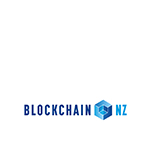Spotlight on NFTs
Blockchain is a general purpose technology. As a general purpose technology, blockchain can be used for many different things and is certainly not limited to just cryptocurrencies. Non-fungible tokens (NFTs) are one of those other uses.
While NFTs have many different uses (for example, they can be used for tickets to events, real estate, digital identity, and so on), the current interest is over their use in art and collectables. No doubt sparked by the startling sale of an NFT by Beeple for $69USD million in February by Sotheby’s.
Despite the hype surrounding NFTs, they are not new. CryptoKitties, launched in 2017, were early NFTs (see here for a contemporary article from 2017). Admittedly, CryptoKitties was largely limited to crypto enthusiasts as ether (a cryptocurrency) was required to purchase them. Now NFTs have entered the mainstream. For example, the National Basketball League (NBA) has released its NBA Top Shot NFTs, which are akin to digital trading cards with NBA highlights and digital art that people can buy and trade online.
Part of the interest in NFTs for creators is that they allow them to explore new types of art. For a good example of new art forms listen to this podcast. Also, NFTs can allow creators to easily access royalties for subsequent sales of their NFTs, something which can only be a good thing for creators. Some countries, but not New Zealand, have had Royalty Rights legislation for many years. However, in practice, the legislation was relatively easy to evade and was very expensive to administer. Royalty rights in NFTs, in contrast, can apply automatically to any sale without expensive administration overheads as the creator receives their cut of the sale at the same time as the seller.
For a really interesting NFT marketplace, see https://async.art/, and closer to home there are these New Zealand NFT marketplaces: Unstoppable Art Machine, VeVe and Glorious. An artwork that is particularly interesting is ‘Skin’, which changes every 24 hours, another equally interesting one as ‘Form Farm’.
When NFTs are discussed often three areas of concern arise: environmental concerns, money laundering and copyright concerns. However, the concerns are often overblown:
- Environment concerns: some NFTs, particularly those minted on Ethereum, can use considerable amounts of electricity, because they use “proof-of-work”. However, the creators (and purchasers of NFTs), are increasingly aware of their carbon footprint. Indeed, Dapper Labs, which helped create CryptoKitties, has created a new blockchain, Flow, which uses “proof-of-stake”, and has minimal electricity usage. Flow is used by NBA’s Top Shot NFTs.
- Money laundering: criminals may use NFTs to launder money. The use of art, particularly expensive art, to launder money is unfortunately very common. If criminals do use NFTs to launder money, it is not something unique in the technology.
- Copyright concerns: buyers of NFTs need to be careful that the NFT does not infringe copyright. There have been many examples of someone taking someone else’s artwork and creating an NFT. Creators, however, have always been able to copy others’ work and pass it off as their own. Again, there is nothing different with an NFT. It pays to exercise due diligence to ensure that the creator of the NFT is not infringing another’s copyright. For example, by buying the works of a recognised artist.
Ngā mihi nui,
Alex Sims, on behalf of the team at BlockchainNZ
Please share our news and invite your team to subscribe here for their own free copy!






